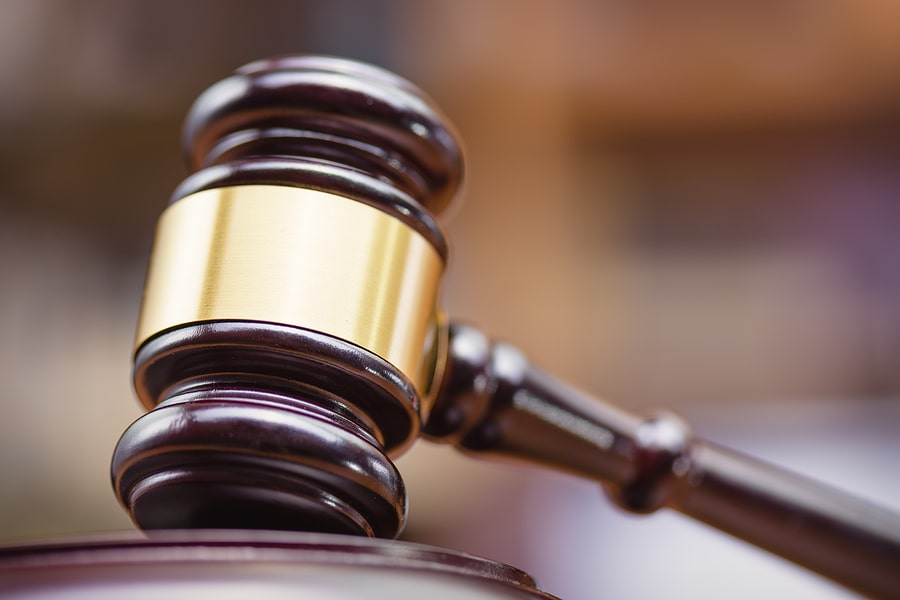
Injuries that a person suffers in an accident caused by someone else’s negligence can be debilitating and can impact his or her life for a significant period. Those injuries, which may include soft tissue injuries, paralysis, neck and back injuries, broken bones, and traumatic brain and head injuries, often require substantial and expensive medical treatment and procedures (such as surgeries) to correct. Also, depending on the extent of the treatment and severity of the injuries, the accident victim might have to miss time from work, potentially losing a considerable amount in wages.
In personal injury cases, the plaintiff—or the accident victim—has the burden of proving fault for the accident (liability) and damages. The defendant, or the person or entity who allegedly caused the accident, generally does not have to prove anything in a personal injury case. Although it might seem somewhat unfair that the injured person has to prove everything in a personal injury case to recover compensation, that is simply how the civil legal system works.
In most personal injury cases, the accident victim must prove all of the legal elements of his or her case by a preponderance of the evidence. In other words, the accident victim must show that it is more likely than not that the defendant caused the accident and that the accident was a cause of the personal injuries and damages which he or she suffered.
In some instances—such as with punitive damages in personal injury cases—the clear and convincing evidence standard will apply. The clear and convincing evidence standard is a higher burden of proof than the preponderance of the evidence standard.
If you have suffered injuries in a car accident or another type of accident that resulted from someone else’s negligence, you need experienced legal counsel on your side advocating for you and pursuing the monetary compensation you deserve. A knowledgeable personal injury lawyer can determine the correct legal standard that applies to your case and can assist you with satisfying that legal burden and pursuing monetary compensation.
The Role That Evidence Plays in a Personal Injury Case
A personal injury plaintiff can meet his or her legal burden of proof at trial by presenting various types of evidence. Some people think of evidence as being something tangible. However, in the personal injury context, evidence has a much broader definition. At a personal injury jury trial, evidence could include not only tangible things, like diagrams and medical reports but also direct testimony by witnesses presented on the witness stand.
Evidence also includes both direct and circumstantial evidence, and the law does not weigh one type over the other.
Types of evidence that an accident victim plaintiff could introduce at trial to meet his or her legal burden of proof include:
- The direct testimony of the accident victim about how the accident occurred, medical treatment received, the injuries suffered, and the overall impact these injuries had on the accident victim’s life
- The direct testimony of witnesses who observed the accident and/or what the accident victim went through following the accident
- Medical records and bills that describe the treatment that the accident victim received following his or her accident, along with the cost of that treatment
- Photographs that depict the property damage to the vehicles that were involved in the accident
- Photographs that depict the injuries that the accident victim suffered shortly after the accident
- Statements made by the at-fault driver following the accident
- Photographs that depict the scene of the accident and the locations and positions of the vehicles that were involved in the accident
- Reports prepared by a police officer who responded to the accident scene
- Medical records evidencing the accident victim’s medical treatment before the accident, which the defense may use in an attempt to characterize injuries as pre-existing
- Direct testimony or medical records prepared by health care providers, such as doctors
- Direct testimony from family members, friends, or children about the impact the accident has had on the accident victim’s life and overall well-being
The Rules of Evidence lay out how the parties to litigation can present at trial. If your personal injury case goes to trial, an experienced personal injury lawyer could assist you with gathering and presenting the evidence necessary to satisfy your legal burden of proof in court.
What Is the Burden of Proof in a Personal Injury Case?
In a personal injury case, the accident victim—otherwise known as the plaintiff—always has the burden of proof. The burden of proof is the threshold that an accident victim must satisfy to succeed in his or her case and recover monetary compensation.
The burden of proof is different for plaintiffs in different types of cases. For example, in criminal cases, the prosecution must meet its burden of proof beyond a reasonable doubt. In other words, the prosecutor must prove his or her case beyond a doubt that is based upon ordinary reason and common sense. Beyond a reasonable doubt is the highest possible burden of proof available in our justice system.
In personal injury cases, plaintiffs must ordinarily prove their cases by a preponderance of the evidence. This means that they must demonstrate that it is more likely than not that the defendant caused the accident and that the accident victim suffered injuries and damages as a result. The preponderance of the evidence is a much lower burden of proof than the burden used in criminal cases, which is why people can be civilly liable but not criminally liable for the same incident.
In personal injury cases where the accident victim is seeking punitive damages, the clear and convincing evidence standard will apply. This legal standard fits squarely between the beyond a reasonable doubt standard and the preponderance of evidence standard.
A personal injury lawyer near you can assist you with satisfying the legal elements necessary to prove your personal injury case and pursue the compensation and damages that you deserve.
What Is Clear and Convincing Evidence?
The clear and convincing evidence standard is higher than the preponderance of the evidence standard. To demonstrate something by clear and convincing evidence, you must typically show that a fact is substantially and highly more likely to be true than it is to be untrue.
In the personal injury context, the clear and convincing evidence standard typically comes into play in the context of punitive damages. Courts do not allow plaintiffs to pursue punitive damages in every personal injury case. However, they often do allow them where there are aggravating circumstances. Punitive damages are typically available only in cases where a defendant’s conduct was particularly egregious or dangerous. They are used to punish the defendant and to dissuade others from engaging in similar conduct in the future. For example, punitive damages might be available in a drunk driving accident case where the accident victim is deceased.
In many states, punitive damages can be available in personal injury cases where the plaintiff shows, by clear and convincing evidence, that the actions of the defendant showed some type of oppression, wantonness, fraud, malice, or willful misconduct. If the plaintiff satisfies his or her legal burden by a preponderance of the evidence, then the plaintiff might recover monetary compensation in the form of damages.
Preponderance of Evidence vs. Clear and Convincing Evidence
 To prove something by clear and convincing evidence, the accident victim must typically show a high probability that something is true. However, to demonstrate something by a preponderance of the evidence, it is only necessary for the plaintiff to show that the truth of the evidence is more likely than not.
To prove something by clear and convincing evidence, the accident victim must typically show a high probability that something is true. However, to demonstrate something by a preponderance of the evidence, it is only necessary for the plaintiff to show that the truth of the evidence is more likely than not.
In the majority of personal injury cases, the accident victim will only need to demonstrate the legal elements of his or her case by a preponderance of the evidence. In other words, the accident victim will need to show that it is more likely than not that the at-fault person or entity acted unreasonably under the circumstances, that their breach of care caused the accident, that the accident victim suffered injuries, and that the injuries occurred because of the accident.
If the accident victim wishes to recover punitive damages in the personal injury case, then he or she will typically have to satisfy the higher clear and convincing legal standard.
What Types of Monetary Compensation Can I Receive if I Meet My Legal Burden?
If you satisfy your legal burden, there are several types of monetary compensation that you might pursue and recover for the injuries you suffered in an accident. For example, in most personal injury cases, you will need to demonstrate, by a preponderance of the evidence, that someone acted unreasonably under the circumstances, and that as a result, an accident occurred. In addition, you must establish, by a preponderance of the evidence, that you were injured and that your injuries resulted from the accident.
To satisfy the legal burden of proof in a personal injury case, you may need to rely upon certain types of expert testimony. For example, a police officer, investigator, or lay witness might need to testify about how a particular accident occurred.
When it comes to your injuries and medical treatment, a healthcare provider may need to causally connect your injuries to the accident in which you were involved. Therefore, witness testimony becomes extremely important when it comes to satisfying your legal burden of proof of a personal injury case.
If you satisfy your legal burden, you may pursue damages. The amounts and types of monetary compensation and damages you might recover depend upon the severity of your injuries, as well as the seriousness of the accident in which you were involved. Generally speaking, the more severe your injuries, the more extensive your medical treatment, and the higher your medical treatment bills, the more damages you may recover compensation in your personal injury case.
Medical Care
First of all, when it comes to damages in a personal injury case, you might be eligible to recover monetary compensation for all of your medical treatment. If you had to undergo surgery, physical therapy, or other medical procedure, you could receive financial compensation for that treatment. This is true even if you had health insurance in place at the time of your accident to pay for some or all of your treatment.
Lost Income
In addition, if you had to miss time from work to recover from your injuries, you could file a claim for lost wages. In some instances, accident victims are injured to such an extent that they can no longer do the same job that they did before their accident. Seriously injured accident victims might even have to switch careers altogether because of their injuries. In those cases, injured accident victims can file a claim for loss of earning capacity.
Non-Economic Damages

Personal Injury Lawyer, David Brauns
In addition to these out-of-pocket expenses, you might be eligible to recover non-economic damages in your case, including compensation for all of your related mental anguish, emotional distress, pain and suffering, and inconvenience. In accident cases where a person suffers a permanent injury—such as paralysis—the accident victim could bring a claim for loss of use of a body part. Moreover, in cases where an accident victim suffers a permanent injury that keeps him or her from enjoying certain activities, the accident victim could bring a claim for loss of life enjoyment.
A personal injury attorney near you could assist you with satisfying your legal burden, making you eligible to recover monetary compensation and damages for your injuries.














